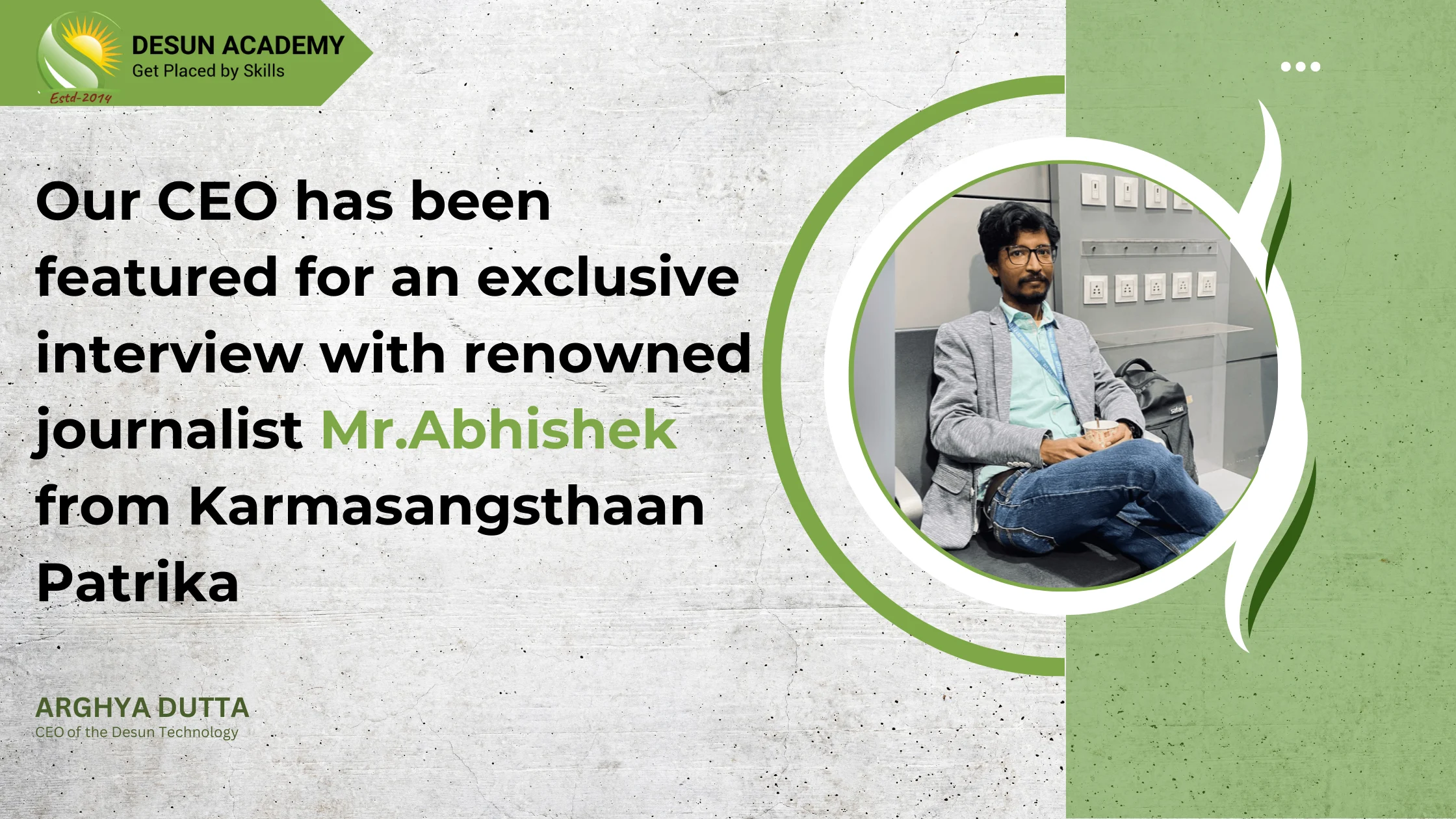
How do I start a React js course online?
Are you prepared to advance your knowledge of React JS? and want to join in React Js course? If yes, then this article is for you.
You only need to look at this comprehensive instruction to get proficient with the potent JavaScript library. This tutorial can help you regardless of your level of experience with React development—whether you’re a novice trying to learn the language from the start or an expert trying to improve. We’ll cover what you need to know about React JS in this extensive guide, from the fundamentals to more complex ideas. In this React JS course, you will gain knowledge about how React functions, how to configure your development environment, and how to use React components to construct dynamic and interactive user interfaces. In addition, we’ll explore the most recent best practices and pointers to enable you to become a React developer to the fullest. Through comprehensive instruction, real-world scenarios, and hands-on practice, you will acquire a profound comprehension of React JS in this React JS course and the self-assurance needed to create your own remarkable online applications. Prepare to advance your React knowledge and quickly become an expert. Together, let’s unleash React’s power!
However, nowadays React js course has become more and more important for both seasoned experts and aspiring web developers in today’s fast-paced digital environment. React.js, one of the most well-liked JavaScript libraries for UI development, provides a strong and effective means of producing dynamic and interactive online apps. Enrolling in a React js course online is a great method to accomplish your goals, whether you’re a novice eager to explore the world of web programming or an experienced developer trying to broaden your skill set. We’ll lead you through the steps to get started learning React.js online in this in-depth guide.
React JS Course Tutorial: Table of Contents
- What is React Js?
- Features of React Js
- Advantages of React Js
- Disadvantages of React Js
- React Props
- React Js State
- React Js Components
- React with Redux
What is React Js?
One of the most widely used front-end JavaScript libraries in web development is called React. A sizable development community and Facebook are mostly responsible for its upkeep. It’s used by many big, well-known businesses (like Netflix, Instagram, and Airbnb, to mention a few) to create their user interfaces and UI elements. This ReactJS course will introduce you to the basics, features, and components of React, regardless of whether you’re new to it or just want a fast refresher on its key ideas.
Features of React Js
JSX: JSX is a ReactJS plugin that is incredibly helpful if utilized even if it is not required because of its ease of use.
Component: By dividing the functionality into independent, reusable code, components work to simplify the code. They are comparable to pure JavaScript functions. Components can be utilized as classes and as functions. Props and a state are further features of components that make life easier. Within a class, each prop’s status is maintained.
Virtual DOM: An in-memory data-structure cache created by React is called a virtual DOM. In the browser’s DOM, only the final DOM modifications have been made.
Javascript Expressions: You can insert JS expressions into JSX files, for instance, by using curly brackets.
Advantages of React Js
-
The virtual dom used by ReactJS uses an in-memory data-structure cache, so the browser’s dom only updates with the most recent changes. The app runs faster as a result.
-
You can create any kind of component you want by using the react component functionality. The parts can be reused and are helpful for maintaining the code.
-
Reactjs is easy to understand because it is an open-source JavaScript library.
-
ReactJS is supported by Facebook and Instagram and has become quite popular very quickly. It is utilized by numerous well-known businesses, such as Apple and Netflix.
-
ReactJS is updated and well-managed because it is maintained by Facebook.
-
Sophisticated user interfaces for desktop and mobile apps can be made with ReactJS.
Disadvantages of React Js
-
Since JSX is used to write much of the code, HTML and CSS are included in the JavaScript code. Given that the majority of other frameworks want to keep HTML and JavaScript code apart, this can be confusing.
-
The ReactJS download size is enormous.
React Props
ReactJS has a unique approach to data flow and manipulation, which might lead to some concepts (props, state, etc.) being hard to grasp. One of the key ideas of ReactJS is React Props, which you will learn about in this article. When passing data from one component to another, the term “props” refers to “properties”. This ReactJS lesson will also teach you how to use the React Props feature and its philosophy.
React Js State
One other key ReactJS notion is ReactJS State. A component’s data is stored in a React State. In turn, this component sends the data from the state to the output. Over time, a component’s “state” may vary. The component re-renders whenever this occurs. The setState() function, the fundamentals of ReactJS State, and the distinctions between ReactJS Props and ReactJS State are all covered in this ReactJS tutorial.
React Js Components
The fundamental units of any ReactJS application are ReactJS Components. It divides the UI into discrete components that may be handled independently of one another. The reason ReactJS is so popular is because ReactJS Components lets you reuse the UI elements. This ReactJS lesson will teach you about the many kinds of ReactJS components, how to layer ReactJS components, and how React components work.
React with Redux
Redux is a JavaScript application’s predictable state container. As an application expands, it helps to keep the data organized and in flow. You will get a working grasp of Redux and its most fundamental ideas in this ReactJS tutorial. This ReactJS lesson also includes a bonus that will assist you in building a basic ReactJS application both with and without Redux so you can better understand the differences.
React Js course guide for beginners
Understanding React.js
It’s important to comprehend what React.js is and why it’s valuable to learn before diving into how to establish an online course on the platform. Facebook developed the open-source JavaScript library known as React.js or just React. It is employed in the development of user interfaces, particularly for single-page applications, and manages the display layer of programs for the web and mobile platforms. The distinctive feature of React.js is its component-based architecture, which enables programmers to create encapsulated components that are capable of managing their state, hence simplifying code maintenance and reuse.
Assessing Your Current Skill Level
Prior to starting a React.js course online, it’s critical to evaluate your degree of experience and knowledge of web-building principles. Beginners can learn React.js, but it will go more smoothly if they have a rudimentary understanding of HTML, CSS, and JavaScript. Before tackling React.js, if you’re completely new to web development, think about beginning with basic classes or tutorials on HTML, CSS, and JavaScript to lay a strong foundation.
Choosing the Right Online Platform
It can be difficult to select the best React.js course online because there are so many online resources available. It’s critical to investigate and assess various platforms according to criteria including course content, teacher experience, student feedback, and cost. Popular online education providers with React.js courses include:
-
Udemy: Known for its vast library of courses on various topics, Udemy offers numerous React.js courses catering to different skill levels.
-
Coursera: Coursera partners with top universities and organizations to provide high-quality online courses, including React.js specialization programs.
-
Desunacademy: Desuncademy offers interactive coding lessons for React Js and projects, making it ideal for hands-on learners looking to master React.js.
-
Pluralsight: Pluralsight provides video tutorials and interactive courses taught by industry experts, covering a wide range of technologies, including React.js.
-
FreeCodeCamp: FreeCodeCamp offers a free and comprehensive curriculum for learning web development, including React.js, through interactive coding challenges and projects.
The length of the course, the complexity of the curriculum, chances for project-based learning, and platform features are all important considerations when choosing an online learning environment for your React.js course in Kolkata.
Leveraging Additional Resources
It’s advantageous to use extra resources to supplement the online course’s core curriculum to improve your learning process. Here are some more resources to think about:
-
Official Documentation: Refer to the official React.js documentation available on the React website for comprehensive explanations, guides, and examples of React.js concepts and features.
-
Online Tutorials and Blogs: Explore online tutorials, blogs, and articles on React.js topics to gain different perspectives and insights from the React.js community.
-
YouTube Channels: Subscribe to YouTube channels dedicated to React.js tutorials and walkthroughs, where experienced developers share tips, tricks, and best practices.
-
Books: Invest in recommended books on React.js to deepen your understanding of core concepts and explore advanced topics in greater detail.
-
Code Repositories: Explore code repositories on platforms like GitHub to study real-world React.js projects, analyze code patterns, and learn from experienced developers’ implementations.
Building Projects and Portfolio
Building projects and compiling a portfolio is one of the best ways to demonstrate your abilities to prospective employers and reinforce your grasp of React.js. Work on real-world projects, including web apps, e-commerce websites, or interactive dashboards, as you advance through your React.js course to put your newly learned abilities to use. To stand out to recruiters and hiring managers, document your projects, place them on platforms such as GitHub or personal portfolio websites, and emphasize your expertise with React.js.
Continuous Learning and Practice
Learning React.js is a journey that takes constant practice and learning. Keep abreast of the most recent advancements within the React.js ecosystem, investigate novelties, and engage in virtual communities to share expertise and insights with other developers. To maintain your skills and sharpen your coding abilities, set aside time each week to practice coding, work on personal projects, and solve code challenges.
Conclusion
Starting a React.js course online is an excellent investment in your web development career, offering valuable skills and opportunities for growth. By understanding the fundamentals of React.js, choosing the right online platform, enrolling in a course, leveraging additional resources, building projects, and continuously learning and practicing, you can embark on a fulfilling journey to mastering React.js and building innovative web applications. So, take the first step today and begin your React.js learning journey online with us. To know more visit us and enroll now.








